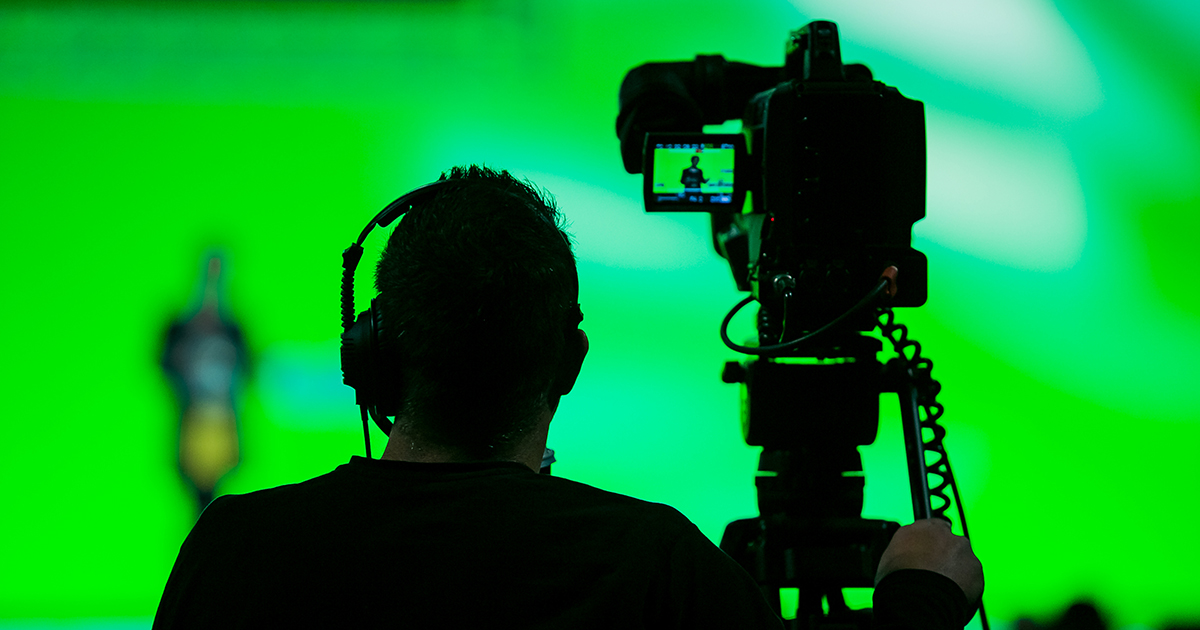What is a pop-up production? When did the M&E industry start using the term and the techniques it represents, and why?
NAB CTO and EVP Sam Matheny and Marco Rota, Microsoft Field CTO for Media and Entertainment, review these questions in NAB Amplify’s “Hey, Sam!” Q&A series, tackling the issues of who’s who and what’s what in technology and M&E.
Rota explains that pop-up productions are yet another M&E innovation bred or accelerated by the COVID-19 pandemic. As the U.S. emerged from its lockdowns, in 2021, Rota says that multiple industries signaled a desire to continue to deliver digital experiences. However, organizations needed to manage costs and capital investment.
Pop-up productions were born to address that need.
Microsoft partnered with companies including Evertz, Lumen and Mediakind “to string together some technology that allowed us to virtualize a lot of the kit that you see at events.” After about a year of collaboration and a lot of reliance on secure reliable transport (SRT), the idea came to fruition, Rota told Matheny.
As of 2022, the field team can set up a real or virtual studio that will do almost everything in a cloud production that would normally require a board and a team on-site at a standard event. Rota notes that this service enable organizations to avoid capex for technology that they would only use in a limited capacity.
At a popup production, the team will set up camera and encoder, then feed raw streams to the cloud (Azure, in Microsoft’s case). The team is then able to work with the footage. Rota’s team uses Evertz’s DreamCatcher Bravo suite to production switch (choose camera angles). They are also able to remotely add graphics overlays. Troubleshooting can also be down from afar in some cases. All of this also limits the number of team members required to travel.
Popup Production Is a Game Changer

Rota says this methodology “is a game changer for a couple of reasons.”
First, you can source talent from anywhere. It also means top talent can juggle gigs more effectively, without factoring in travel time from location to location.
Second, it’s good for sustainability, limiting travel to only necessary occasions and necessary crew. At bare minimum, a pop-up production can be accomplished with only staff handling the signal acquisition, camera operation and encoding on site. And if the production has opted for remote-controlled PTZ cameras, even these can be operated from afar.
Third, the Mediakind Aquila integration enables users to monetize the stream via ad insertion.
Pop-up productions are essentially a “managed service,” more akin to the production version of SaaS, ensuring a cheaper and simpler production to be more accessible, democratizing this type of digital event even for a small organization.
HEY, SAM! DEMYSTIFYING M&E TECHNOLOGY TRENDS:
From artificial intelligence and machine learning to 5G and cloud production, NAB CTO and EVP Sam Matheny tackles the issues of who’s who and what’s what in technology and M&E. Learn all about the technologies that are shaping our rapidly transforming industry in NAB Amplify’s “Hey, Sam!” Q&A series:
- Hey, Sam! Tell Me About AI and ML Applications for Media
- Hey, Sam! What Is Cloud Production?
- Hey, Sam! What Is Hybrid Radio?
- Hey, Sam! What Do I Need To Know About 5G?
- Hey, Sam! How Is Streaming Impacting the TV and Video Marketplace?
While pop-up production will never be the way to broadcast the Super Bowl, Rota thinks the advantages for smaller businesses outside of the M&E industry that want to add a digital video component are clear. The cloud component enables produces to efficiently create brand affinity and reach much larger audiences that could ever attend in person, and to do so with a good quality of service for the price point.
“Bespoke integration” is the name of the game for pop-up productions.
Another advantage is that Rota’s team will deliver the feed to whatever destination is right for the customer. Broadcaster’s CDN? Naturally. OTT platform? Yep. Embedded player on your website? Of course. A proprietary video player? They’ve done that.
Rota expects pop-up productions will evolve to answer the needs of customers. In the near-term, the roadmap is targeting digital watermarking and improving other security measures.
And, of course, pop-up productions are not to be left out of the Web3 conversation. In Rota’s mind, they are packaged “digital delivery solutions,” not limited to live action production. Expect them to deliver signal to the metaverse; after all, the tech is the same.

